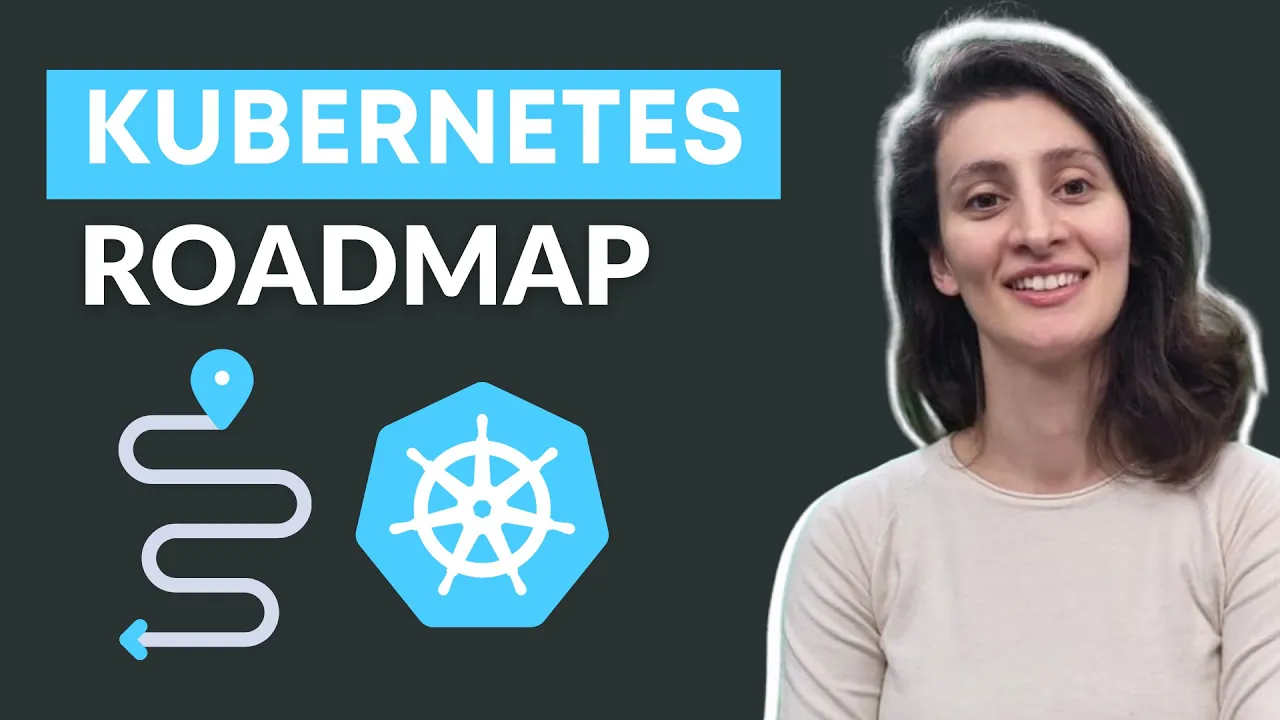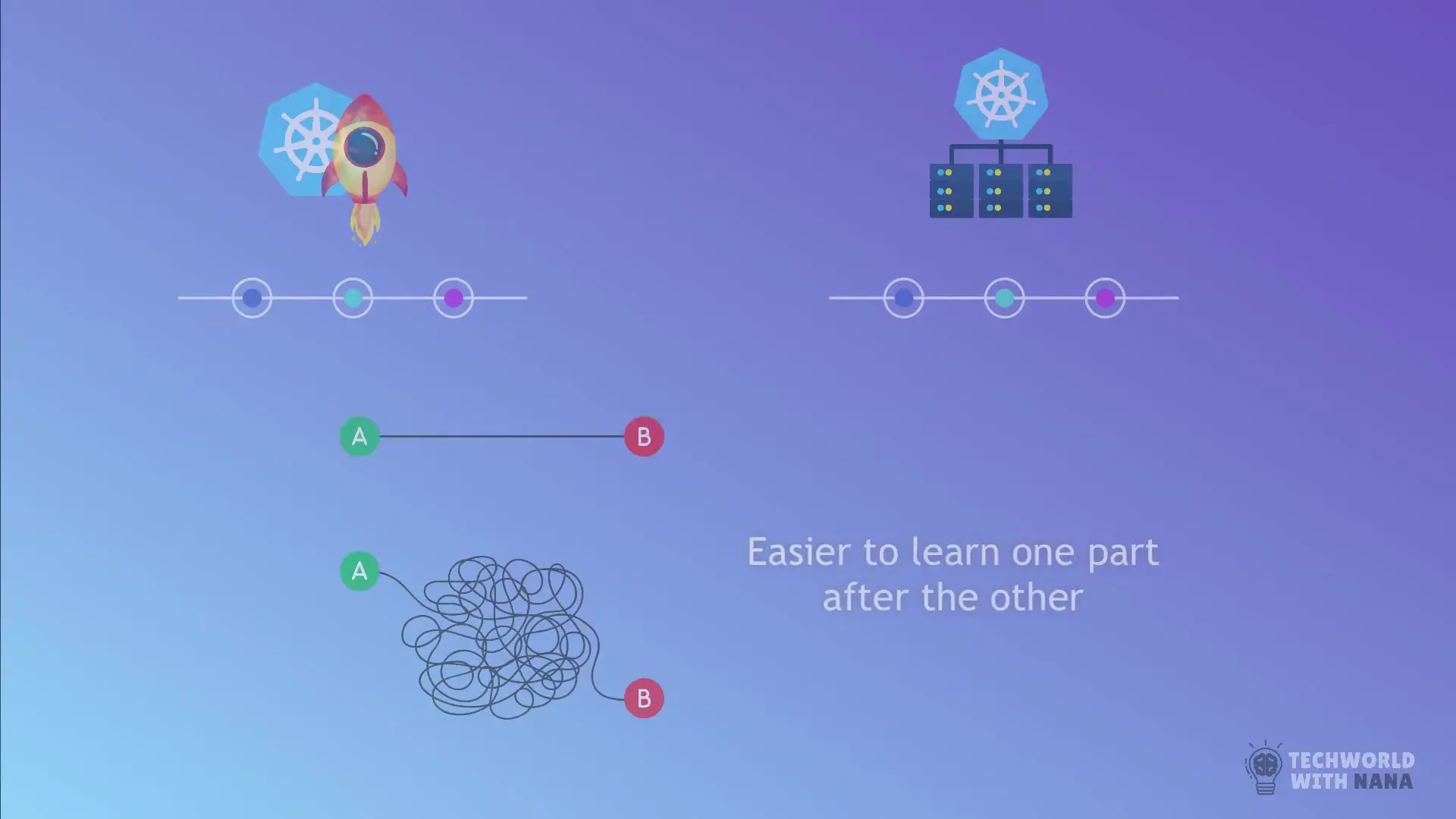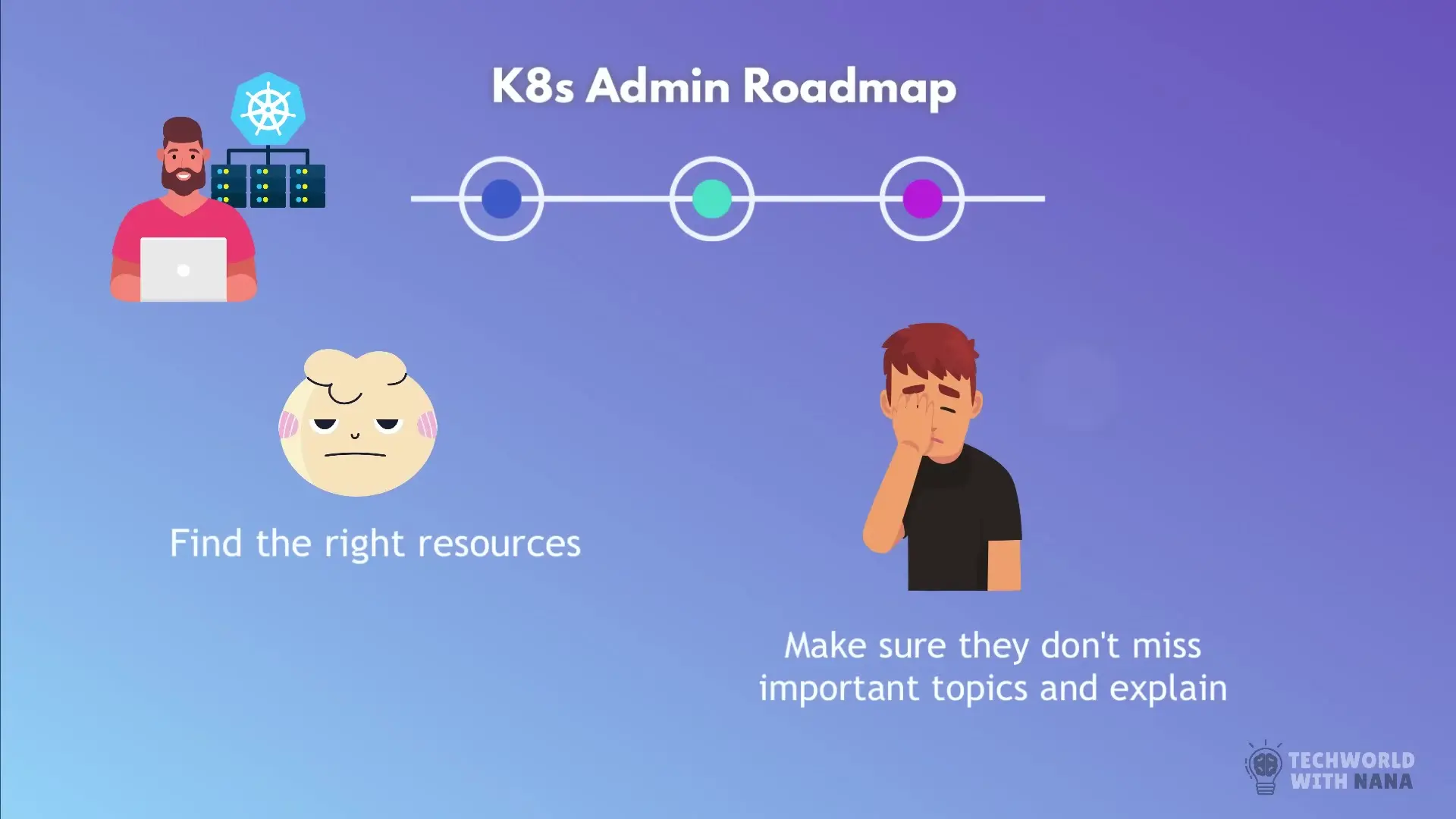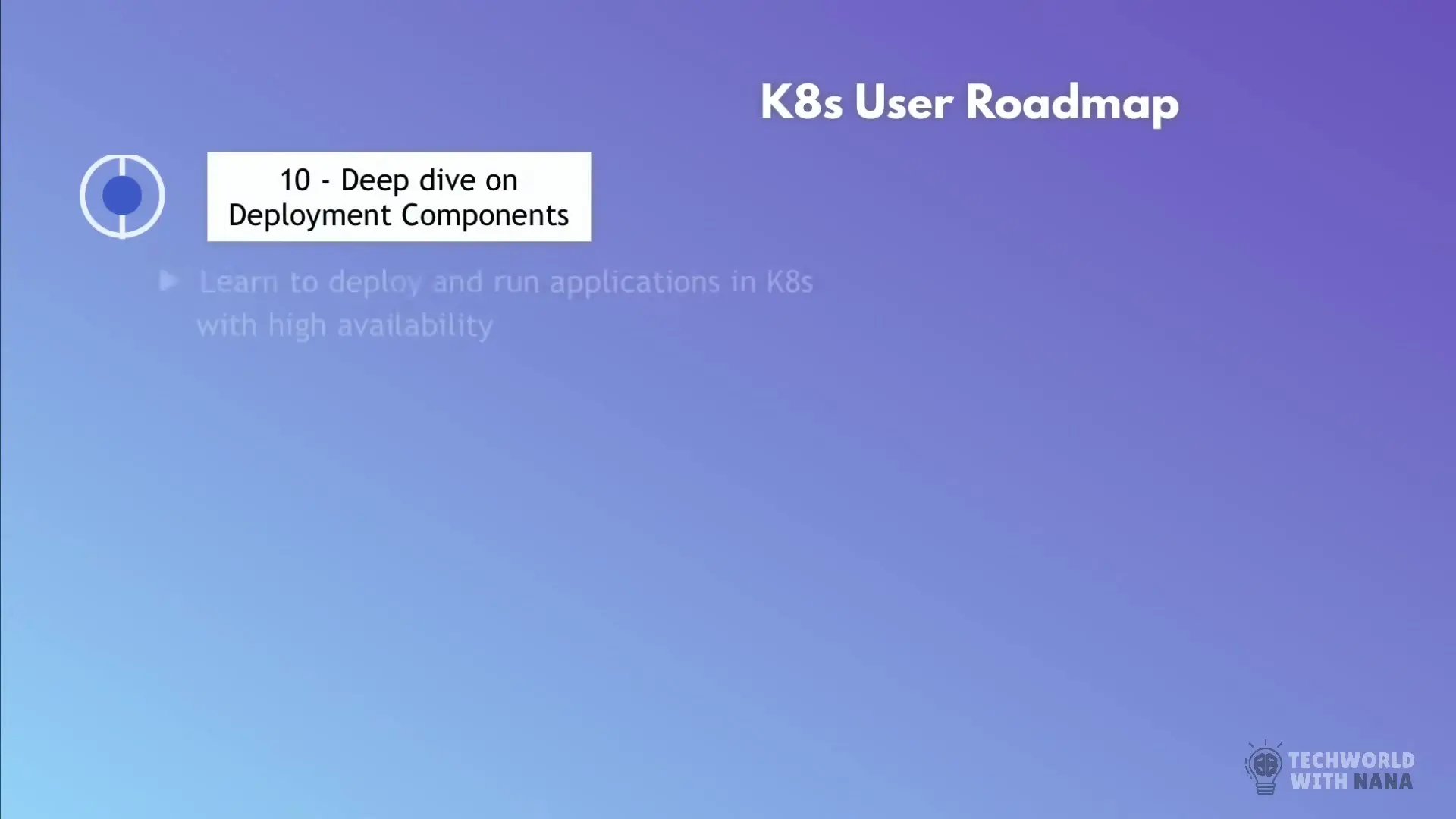
Kubernetes is being adopted at companies at an unprecedented rate, creating significant career opportunities for professionals with expertise in this technology. Some organizations are even establishing dedicated Kubernetes engineer roles. While Kubernetes offers powerful capabilities, its complexity presents a steep learning curve for newcomers. This comprehensive roadmap will guide you through learning Kubernetes efficiently, whether you're an application developer or operations engineer.
Understanding the Two Paths of Kubernetes Learning
Before diving into Kubernetes, it's crucial to understand that like most platforms, Kubernetes has two distinct aspects: the administration side and the user side. The administration side involves setting up, initializing, and configuring the platform, while the user side focuses on deploying applications and services within the established environment.
This distinction is important because it helps you focus your learning based on your role and objectives:
- Application developers need to learn how to deploy and run applications within Kubernetes
- Operations engineers need to focus on Kubernetes administration and operational aspects
By recognizing this distinction, you can approach your learning journey with clarity and purpose. This separation is even reflected in Kubernetes certifications: the Certified Kubernetes Administrator (CKA) exam and the Certified Kubernetes Application Developer (CKAD) certification.

Essential Kubernetes Fundamentals for Everyone
Before specializing in either path, you need to establish a solid foundation of Kubernetes knowledge. These fundamental concepts apply to both administrators and developers.
1. Understanding the "Why" Behind Kubernetes
The most important entry point to learning Kubernetes is understanding why it exists and what problems it solves. Learn how Kubernetes addresses challenges in operating large containerized applications and why it has become so widely adopted. Only after grasping the "why" should you proceed to learn how it actually implements solutions.
2. Core Components and Architecture
Dive into the core architecture of Kubernetes by understanding:
- Control plane and worker nodes: their roles, connections, and processes
- Core building blocks: Pods, Services, ConfigMaps, Secrets, Ingress, Deployments, StatefulSets, Namespaces, and Volumes
- Background components: Scheduler, Controller, etcd, kubelet, container runtime, etc.
Even though you may interact directly with only some of these components, understanding all of them helps you grasp how Kubernetes works behind the scenes, including its self-healing functionality and how it manages desired versus actual state.
3. Hands-On Practice with Kubernetes
After building theoretical knowledge, it's essential to get hands-on experience. This practical approach builds confidence and breaks down any apprehension about working with Kubernetes.
Learn to interact with a Kubernetes cluster through:
- kubectl command-line interface and its essential commands
- Kubernetes manifest files (YAML configurations) that define the desired state of your applications
- Troubleshooting techniques to diagnose and resolve common issues
# Example kubectl commands for basic operations
kubectl get pods # List all pods
kubectl describe pod <pod-name> # Get detailed info about a pod
kubectl logs <pod-name> # View logs from a pod
kubectl apply -f manifest.yaml # Create/update resources from a manifest file4. Common Misconfigurations and Best Practices
Kubernetes offers tremendous flexibility, which means there are many ways to configure it incorrectly. Learning about common misconfigurations and why they should be avoided will help you understand Kubernetes more deeply and prevent mistakes that might not be immediately obvious from documentation alone.
5. Helm Charts
As you progress, learn about Helm charts - a package manager for Kubernetes that simplifies deploying applications and services. Understanding what Helm charts are, why they're useful, and how to use them will make working with Kubernetes significantly easier, especially when deploying third-party services alongside your applications.

The Kubernetes Administrator Learning Path
With the foundation established, those pursuing the administrator path should focus on these areas:
1. Kubernetes Deployment Options
Understand different ways to operate Kubernetes clusters:
- Self-managed Kubernetes installations
- Managed Kubernetes services (AWS EKS, Azure AKS, Google GKE)
- Pros and cons of each approach
This knowledge helps you make informed decisions about how to operate Kubernetes for your specific organization.
2. Kubernetes Networking
Networking is crucial for Kubernetes administrators. Study concepts like:
- Ingress and network policies
- Pod-to-pod and pod-to-service communication
- Kubernetes Network Interface (CNI) and network plugins
- Cluster DNS service
3. Security and Authentication
Learn how to secure your Kubernetes cluster through:
- Role-Based Access Control (RBAC)
- Authentication mechanisms
- Network security policies
- Secret management
4. High Availability and Disaster Recovery
Understand how to create resilient Kubernetes deployments that can withstand failures and recover from disasters.

The Kubernetes Application Developer Path
For those focusing on deploying and managing applications in Kubernetes, these areas are essential:
1. Application Deployment Strategies
Learn different ways to deploy applications in Kubernetes:
- Rolling updates
- Blue/green deployments
- Canary deployments
- A/B testing strategies
2. Application Configuration
Master techniques for configuring applications in Kubernetes:
- ConfigMaps and Secrets for configuration management
- Environment variables
- Configuration best practices
3. Monitoring and Logging
Understand how to gain visibility into your applications running in Kubernetes:
- Prometheus for monitoring
- Grafana for visualization
- ELK/EFK stack for logging
- Distributed tracing with tools like Jaeger
4. CI/CD Integration
Learn how to integrate Kubernetes with continuous integration and deployment pipelines, automating the deployment process for your applications.
Practical Learning Approaches
Regardless of which path you choose, these approaches will help you learn effectively:
- Set up a local Kubernetes cluster using tools like Minikube or Kind
- Work through hands-on tutorials and projects
- Contribute to open-source Kubernetes projects
- Join Kubernetes communities to learn from others' experiences
- Prepare for relevant certifications (CKA or CKAD)
Conclusion
Learning Kubernetes is a journey that requires understanding both theoretical concepts and practical applications. By following this roadmap and focusing on either the administrator or developer path based on your role, you can efficiently build the skills needed to work effectively with Kubernetes.
Remember that Kubernetes is constantly evolving, so continuous learning is essential. Stay updated with the latest developments, best practices, and community insights to maintain and enhance your Kubernetes expertise over time.
With dedicated study and practice following this kubernetes learning roadmap, you'll be well-positioned to leverage Kubernetes for career advancement and to help your organization successfully implement container orchestration at scale.
Let's Watch!
Complete Kubernetes Learning Roadmap: From Beginner to Expert in 2023
Ready to enhance your neural network?
Access our quantum knowledge cores and upgrade your programming abilities.
Initialize Training Sequence